We have much more to do and your continued support is needed now more than ever.
For Clean Water and Flood Protection, We Need to Protect Wetlands and Streams
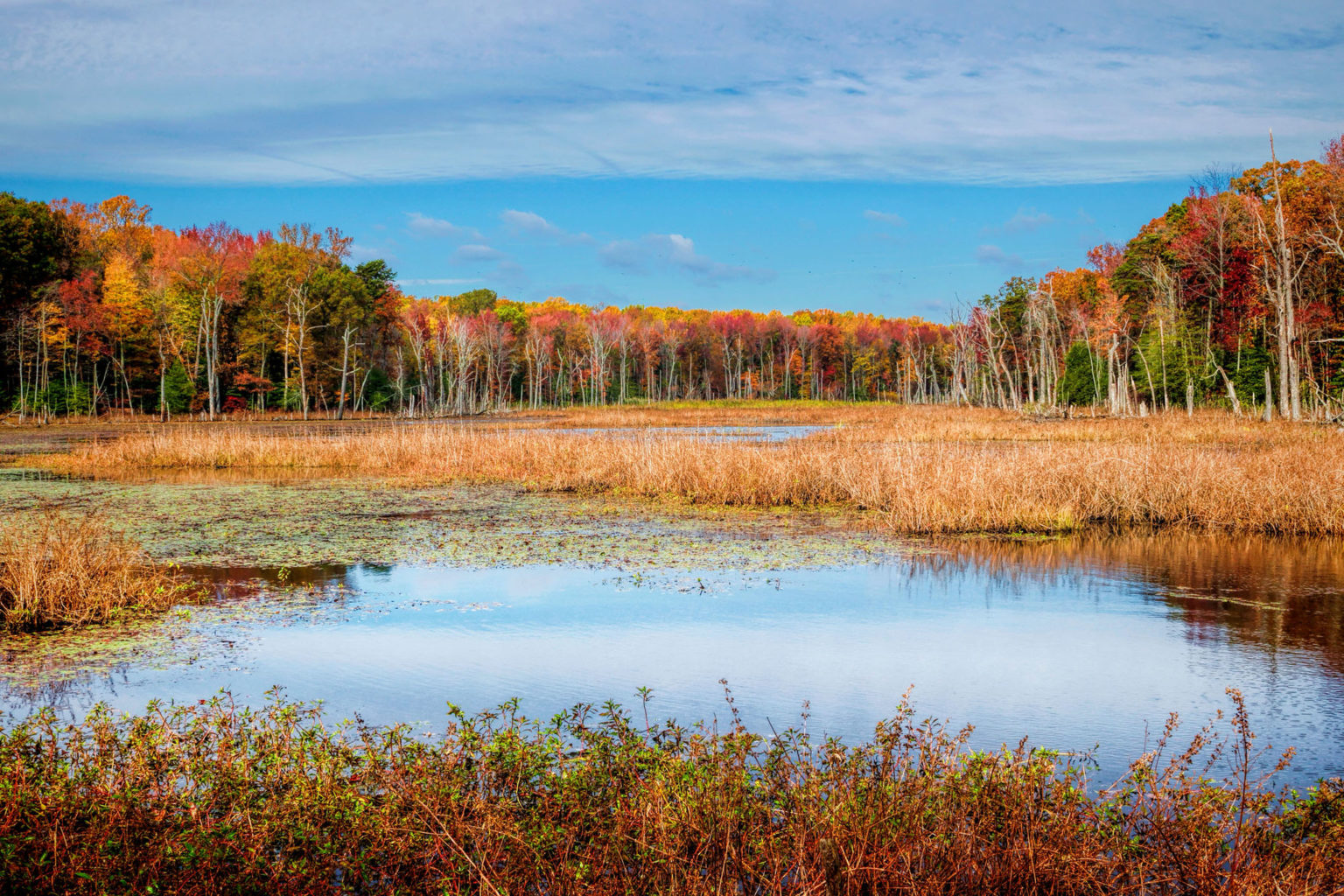
In November, the Fifth National Climate Assessment was issued and it has more troubling news for our nation’s waters. The Assessment concludes that “[c]limate change will continue to cause profound changes in the water cycle, increasing the risk of flooding, drought, and degraded water supplies for both people and ecosystems. These impacts will disproportionately impact frontline communities.”
The Assessment further states that “water infrastructure standards and management policies have been slow to meet the new challenges.”
This Assessment comes at a particularly sobering time. In May, the Supreme Court issued a decision in Sackett v. EPA where it effectively rolled back fifty years of bi-partisan protections for wetlands and smaller streams. According to the Environmental Protection Agency, the Sackett decision effectively eliminates federal pollution and destruction protections under the Clean Water Act for 63% of the nation’s wetlands and up to 5 million miles of the nation’s streams.
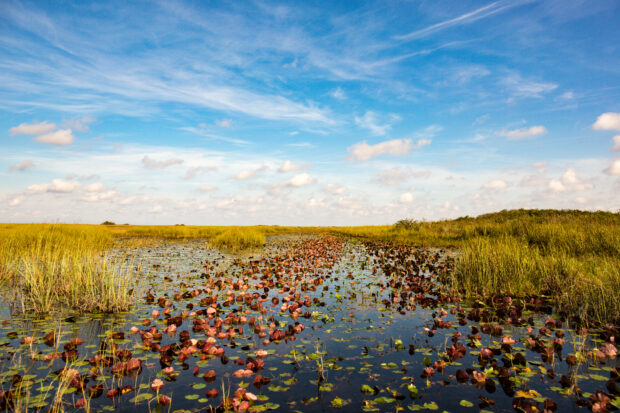
These waters are the filters and sponges of our aquatic systems. They are nature’s way of keeping our water clean and storing water on the landscape that would otherwise flood communities and low-lying areas. At a time when the Assessment tells us we need these natural systems more than ever, the Supreme Court has opened the door for developers and others to fill, destroy, and pollute them without federal safeguards.
More Intense Flooding
The Assessment has stark news about flooding. The trend we have seen over the last several years of more intense and damaging storms will continue. As the chart below shows, the severity and intensity storms, as well as the economic damage they cause, are only getting worse:
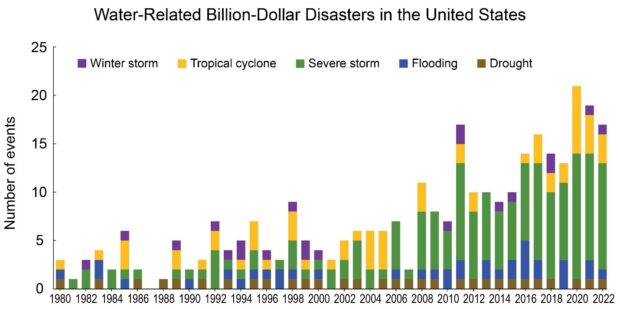
And these disasters are directly related to precipitation changes traced to climate change:
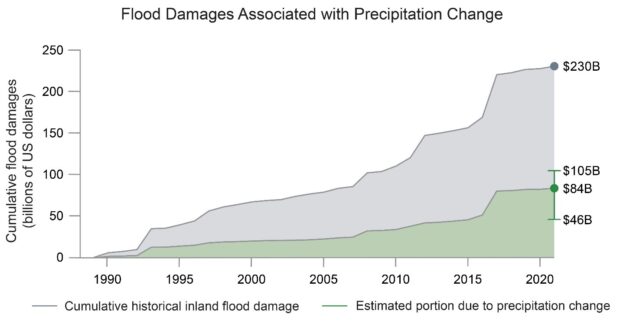
These disasters will not hit all equally: “All communities will be affected, but in particular those on the frontline of climate change—including many Black, Hispanic, Tribal, Indigenous, and socioeconomically disadvantaged communities—face growing risks from changes to water quantity and quality due to the proximity of their homes and workplaces to hazards and limited access to resources and infrastructure.”
More Threats to Water Quality
Not only will flooding increase, but the Assessment finds that “climate related events will lead to an erosion in water quality due to warming, increasing weather intensity, and sea-level rise.” Climate-driven threats to water quality include “risks to water supplies when fertilizers and pesticides are mobilized by flooding”, “exposure to harmful algal blooms”, and “increases in fecal coliform bacteria”, all while “treatment plants are challenged by sediments and debris from wildfires in their source waters.”
The below chart illustrates the many threats to water quality posed by climate change:
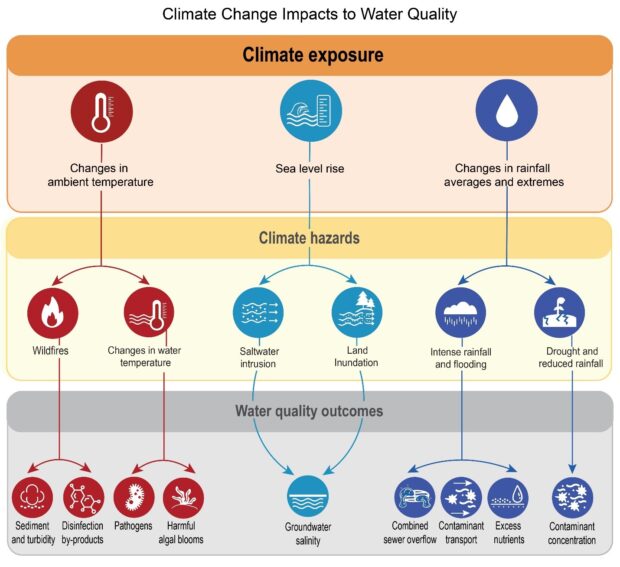
The Need for a Restored Clean Water Act
The Assessment found that “[t]he Nation’s aging water infrastructure, designed under regulations and standards appropriate to an unchanging climate, is deteriorating and threatening public health.” Communities need the natural benefits of wetlands and streams more than ever. Aging water infrastructure and changing precipitation patterns as a result of climate change threaten to worsen flooding, sewer overflows, drinking water contamination, and other water quality challenges.
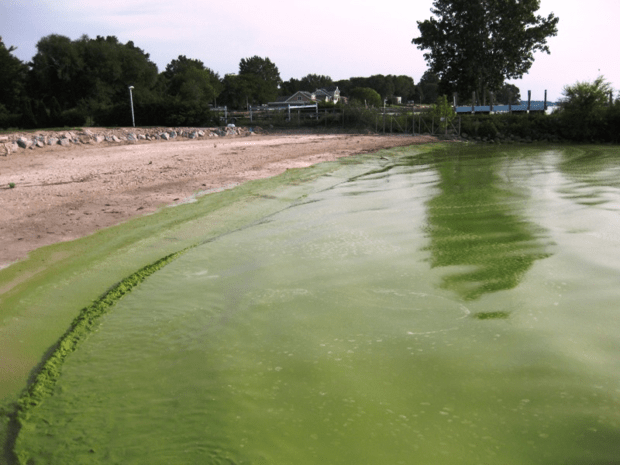
Simply put, we need the water quality and flood storage functions of the waters the Supreme Court found no longer worthy of protections.
The loss of wetlands that absorb floodwaters upstream means more flooding downstream and greater risk to nearby communities. Wetlands play an enormous and low-cost role in absorbing floodwaters. One single acre of wetland can store 1 to 1.5 million gallons of floodwaters.[1]

Similarly, wetlands are the natural filters of our water systems. They intercept surface water and remove or retain polluting nutrients, process organic waste, and hold sediments. These natural functions can save millions in water treatment costs for communities. Small headwater streams that may no longer be protected can perform similar functions in terms of reducing nutrient and other pollution downstream. These streams also provide drinking water to at least 117 million people nationwide.
The first step to safeguarding our communities from the impacts from increased flooding and deteriorating water quality is protecting and restoring the natural systems we have that filter our drinking water and store flood waters. Instead, the Supreme Court is allowing these waters to be destroyed without federal protections. Congress needs to restore these vital and long-standing protections. Across the nation and especially in frontline communities, community health and well-being depend on it.
[1] Environmental Protection Agency, Functions and Values of Wetlands, EPA 843-F-01-002c (2001) (factsheet)






















